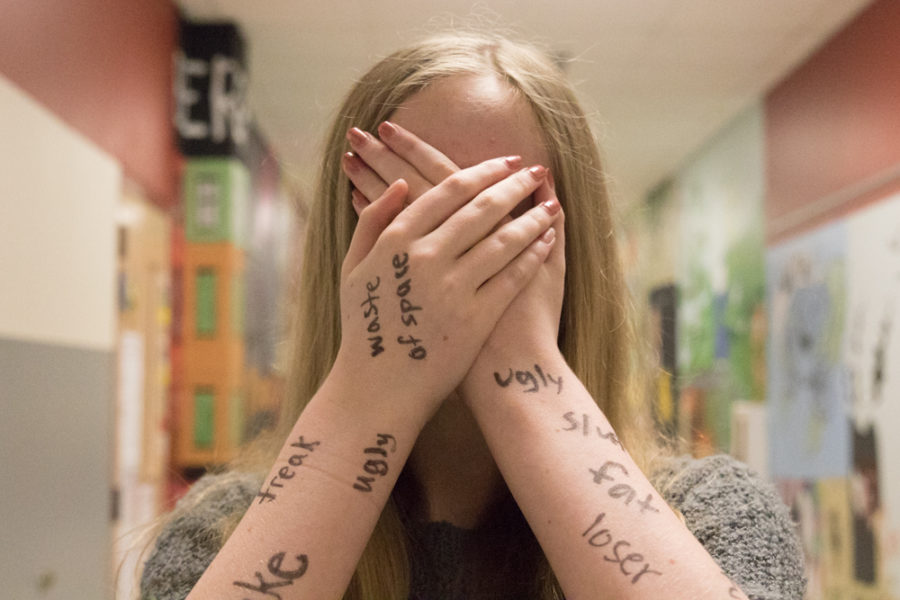Bullying: a National Problem
©The Talon News | Jaclyn Harris
The impact of bullying isn’t just on the surface . The effects run deep and can leave a lasting mark. One in four students are bullied in our nation. Photo taken in Argyle, Texas, on Oct. 2, 2018. (Jaclyn Harris | The Talon News)
November 7, 2018
Name calling, harassment, catcalling, gossiping. Bullying prevention is pushed in schools all across the nation. While prevention is commonly advocated for, bullying still manages to get overlooked. Students often do not see their “joking around” as bullying and think it’s harmless. However, it’s not.
Bullying happens every day and we need to do something about it. Between one in four and one in three students say they have been bullied. (source)
“[I was] verbally bullied a lot,” a victim of bullying said. “A lot of calling names that they knew would hurt. My friends would turn on me and take things that I told them in secret and tell everyone and then make fun of me for it. They would make fun of my face, how I dressed, and of my scars. Just any little thing that I could ever get confidence about, they would use to tear me down. People for a really long time just thought I was this big mean angry person just because I was going through so much pain and didn’t know how to deal with it. I would lash out in anger. The things that they say make you really angry, and you don’t know what to do with that anger, so I would just get angry back and it was just a big cycle of anger and pain.”
Despite efforts to prevent it, bullying is still generally accepted as a fact of public schooling.
“Every school is going to have some [bullying]. Not to be cavalier about it, but that’s part of growing up,” Police Chief Paul Cairney said. “There’s going to be people that are very immature, and they’re going to treat other people badly. But just because it has always existed doesn’t mean we shouldn’t address it and we need to. We need to stop it. People can and should speak up if they see it or are a victim of it.”
They believe that we need to do something about it.
“I would just say to students that if you’re not being treated the way you should be treated at school, on social media, those types of things, that students need to know that it is okay to tell someone, if that’s a parent, principal, teacher, just an adult, let someone know,” Principal John King said. “Our role is to attempt to solve problems but if we don’t know there’s a problem then we can’t solve it.”
When a student is bullied, oftentimes on-lookers fear to step in, even though 57 percent of bullying stops when a student interferes. (source)
“Intervene and help people out,” Cairney said. “If you would want someone to come to your defense if somebody was treating you badly, then that’s what you need to do for other people.”
Bullies often prey on people because they are hurting, and want others to feel the same.
“Bullies are cowards,” Cairney said. “They pick on people they think are weaker than they are. They won’t pick on someone that’s stronger than them; so by very definition, they are cowards. They are weak and they are pathetic.”
With National Bullying Month coming to an end, it is important to remember that bullying happens everyday and everywhere, even if you do not see it, it’s there. Next time you’re in the halls, bathroom, at a football game, take notice of your surroundings, include those who are alone, stand up for someone, and be aware that bullies may be in just as bad of situations as their victims, lashing out as a last cry for hope.







